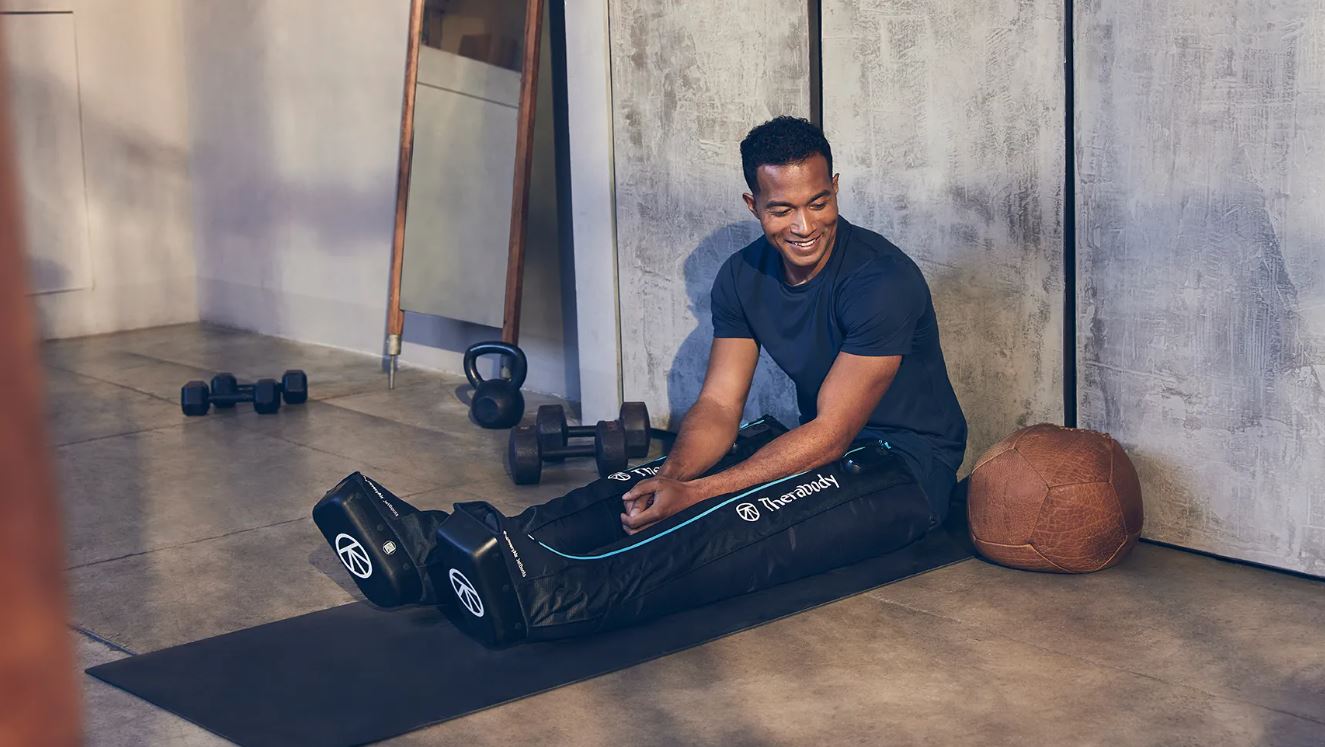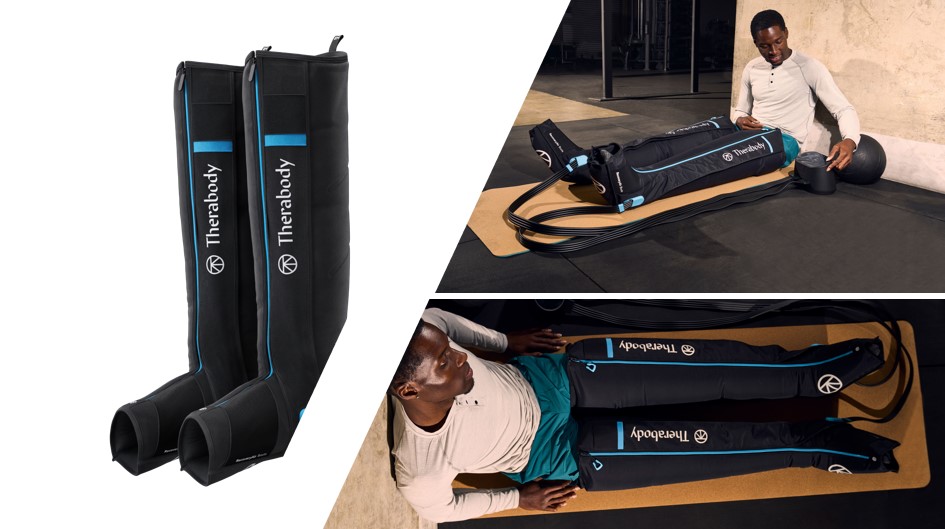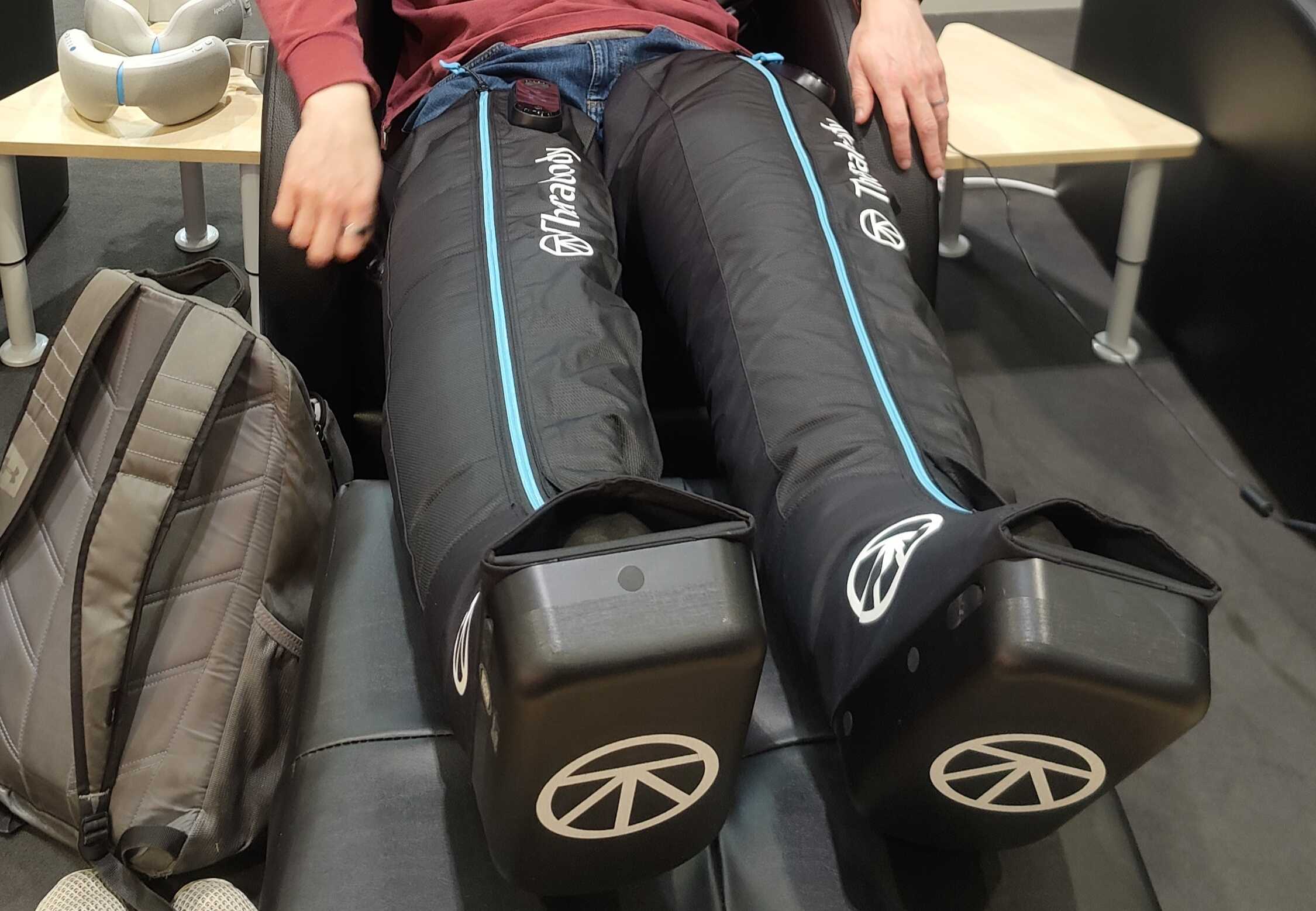I tried Therabody’s self-massage smart pants to get me ready for the London Marathon
I tried Therabody’s RecoveryAir Jetboots

I had been running four times a week for 18 weeks straight, and my legs were in need of a break. I was at the TCS London Marathon 2024 running show, the venue where every marathon runner, or at least a family member, has to go prior to the event to pick up their bib and race pack, and at the time of writing, it was just a few days out from the big day itself.
Having grabbed my pack, I was now in the exhibition center, and it was a veritable running convention: talks on marathon mindsets and training plans were taking place on a stage to one side of the room; the best running shoes and best running watches of the moment were on display in lurid, shiny brand activations; and vendors hawked all sorts of smaller items such as energy gels, oat bakes, foam rollers and heat packs said to relieve muscle soreness.
I was all kitted up, so was just about to head back to the office when a small queue of people caught my eye. It was the Therabody booth, creators of some of the best massage guns, and they had a row of armchairs and sets of the Therabody RecoveryAir Jetboots ready to test. Thinking it wouldn’t be a bad idea to start healing my legs in preparation for the big day, I joined the queue to see what all the fuss was about.
Compression and relaxation

The Therabody RecoveryAir Jetboots, despite the name, aren’t going to rocket-propel me across the finish line at London. They’re a pair of Bluetooth-controlled boots attached to a pair of pants legs you zip yourself into.
Activating the Therabody trousers, either using the on-device controls or customizing your massage in the accompanying Therabody app, four chambers in each leg swell with air like a blood pressure cuff via integrated pumps in the boots, before relaxing and deflating in a sixty-second cycle. The internal chamber and zip-open design even reportedly makes it easy-to-clean.
I had the boots on for around eight minutes, going through eight cycles of compression and relaxation in total, and this sort of pressure massage is said to boost circulation, reduce muscle fatigue, and alleviate the symptoms of delayed-onset muscle soreness.
A little independent research shows “post-exercise massage has been shown to reduce the severity of muscle soreness” although it may not actually restore muscle function.
Sign up for breaking news, reviews, opinion, top tech deals, and more.

Boots of speed
I must admit, sitting there with the boots on as they swelled and released for the first time, it was pretty good. The relief after the first two cycles was palpable, and I turned the intensity up from 50 mmHg (millimeters of mercury, a standard pressure measurement) to 75, I almost forgot I was in a packed convention center. I could certainly see myself sinking into the sofa with a pair after a hard run. For now, I felt rested and refreshed coming out of those pants-legs, and ready to take on one of the biggest races in the world.
For all this (you get a charger, a carry-case, and two boots) you’re paying a steep price: $799 / £699 / around AU$1,245. Not cheap for a novelty, but if you’re running enough distance to justify weekly or even bi-weekly usage, it certainly works out more cost-effective than getting a commercial sports massage at a physio or local spa.
I can’t imagine much better than sitting in a pair of these for 30 minutes at home on a Sunday after a demanding ten-mile run, TV on and cup of tea (or possibly beer) in hand.
A cheaper, simplified Prime leg-sleeve set is available for $599 / £499 / around AU$1,000, or a fully-customizable pneumatic compression RecoveryAir Pro set is also available for $1,299 / £1,199 / around AU$2,000.
You might also like...

Matt is TechRadar's expert on all things fitness, wellness and wearable tech.
A former staffer at Men's Health, he holds a Master's Degree in journalism from Cardiff and has written for brands like Runner's World, Women's Health, Men's Fitness, LiveScience and Fit&Well on everything fitness tech, exercise, nutrition and mental wellbeing.
Matt's a keen runner, ex-kickboxer, not averse to the odd yoga flow, and insists everyone should stretch every morning. When he’s not training or writing about health and fitness, he can be found reading doorstop-thick fantasy books with lots of fictional maps in them.